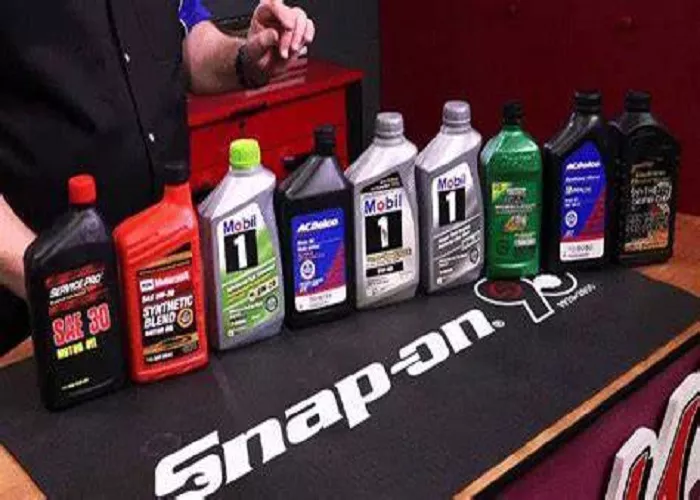Lawn mowers are essential tools for maintaining a healthy and attractive lawn. However, like any other engine-powered equipment, they require proper lubrication to function efficiently and last longer. One of the most critical aspects of lawn mower maintenance is selecting the right cycle oil (also known as engine oil or lawn mower oil).
What is Cycle Oil and Why is it Important?
Cycle oil is a specially formulated lubricant designed for small engines, such as those in lawn mowers. It reduces friction between moving parts, prevents overheating, and helps keep the engine clean by minimizing sludge buildup.
Key Functions of Lawn Mower Oil
Lubrication: Reduces wear on engine components.
Cooling: Helps dissipate heat from the engine.
Cleaning: Prevents carbon deposits and sludge formation.
Sealing: Enhances compression by sealing piston rings.
Corrosion Protection: Prevents rust and oxidation.
Types of Lawn Mower Oils
Not all engine oils are the same. Lawn mowers typically use one of the following types:
SAE-Graded Oils (Single-Viscosity)
SAE 30: Best for warmer climates (above 40°F / 4°C).
SAE 10W-30: A multi-grade oil suitable for varying temperatures.
SAE 5W-30: Ideal for cold weather (below freezing).
Small Engine-Specific Oils
Some manufacturers produce oils specifically for lawn mowers and outdoor power equipment. These often contain additives to enhance performance in small engines.
Synthetic vs. Conventional Oil
Conventional Oil: Cheaper but requires more frequent changes.
Synthetic Oil: More expensive but offers better protection, longer intervals between changes, and improved performance in extreme temperatures.
How to Choose the Right Oil for Your Mower
Manufacturer Recommendations
- Viscosity grade (e.g., SAE 30, 10W-30).
- Oil classification (e.g., API SJ, SL, or higher).
Climate Considerations
Hot weather: Use SAE 30 or SAE 10W-30.
Cold weather: Use SAE 5W-30 for easier cold starts.
Variable climates: 10W-30 is a safe all-season choice.
Engine Type
- 4-stroke engines require motor oil (most common in lawn mowers).
- 2-stroke engines need a 2-cycle oil mix (gas + oil).
Oil Viscosity and Temperature Considerations
Understanding Oil Labels (e.g., SAE 10W-30)
First number (10W): Flow in cold temperatures (“W” stands for winter).
Second number (30): Flow at operating temperature.
Best Viscosity Based on Temperature
| Temperature Range | Recommended Oil Grade |
|---|---|
| Below 0°F (-18°C) | SAE 5W-30 |
| 0°F to 40°F (-18°C to 4°C) | SAE 10W-30 |
| 40°F to 100°F (4°C to 38°C) | SAE 30 or 10W-30 |
| Above 100°F (38°C) | SAE 30 or SAE 40 (for extreme heat) |
Synthetic vs. Conventional Oil: Which is Better?
| Feature | Conventional Oil | Synthetic Oil |
|---|---|---|
| Cost | Cheaper | More expensive |
| Lifespan | 25-50 hours | 50-100+ hours |
| Cold-Weather Performance | Poorer flow in cold temps | Better cold starts |
| Heat Resistance | Breaks down faster | Handles high temps better |
| Engine Cleanliness | More sludge buildup | Keeps engine cleaner |
How Often Should You Change Lawn Mower Oil?
General Guidelines
First oil change: After 5-10 hours of use (breaks in new engines).
Subsequent changes: Every 25-50 hours or once per season.
Heavy use or dusty conditions: Change more frequently.
Signs You Need an Oil Change
- Oil appears dark and dirty.
- Engine runs louder or rougher.
- Smoke or burning smell from the exhaust.
Step-by-Step Oil Change Procedure
Tools Needed
- Fresh oil (correct type & viscosity).
- Oil drain pan.
- Funnel.
- Socket wrench (if needed).
- Gloves & rags.
Steps
- Warm up the engine (2-3 minutes) to help oil flow.
- Turn off and disconnect the spark plug (safety first).
- Locate the drain plug (under the mower deck).
- Drain old oil into a pan.
- Replace drain plug.
- Refill with fresh oil (check dipstick for correct level).
- Dispose of old oil responsibly (take to a recycling center).
Conclusion
Choosing the right cycle oil for your lawn mower is crucial for performance, longevity, and reliability. Always follow the manufacturer’s recommendations, consider your climate, and change the oil regularly. Whether you opt for conventional or synthetic oil, proper maintenance will keep your mower running smoothly for years. By following this guide, you’ll ensure your lawn mower stays in peak condition, giving you a perfectly manicured lawn every time.

